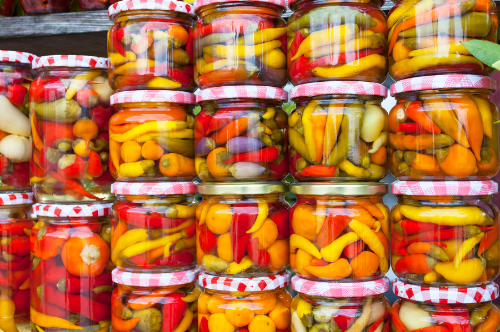
When it comes to children’s nutrition, proper storage and handling of food are critical factors that ensure safety and maintain the quality of the meals you prepare. Inadequate storage and handling can lead to foodborne illnesses, nutrient loss, and spoilage, which can negatively impact your child’s health. This analysis will explore the key aspects of proper food storage and handling, offering practical tips to help you keep your child’s meals safe and nutritious.
The Importance of Proper Food Storage
Food storage is essential for preserving the freshness and nutritional value of children’s meals. Improper storage can lead to the growth of harmful bacteria, spoilage, and a loss of vital nutrients. For parents, understanding the best practices for storing different types of food can make a significant difference in ensuring that what your child eats is both safe and nutritious.
1. Temperature Control
One of the most critical factors in food storage is temperature. Perishable foods, such as dairy products, meats, and fresh produce, should be stored in the refrigerator at temperatures below 40°F (4°C). The cold temperature slows down the growth of bacteria, reducing the risk of foodborne illnesses. It’s also important to store cooked foods promptly after meals, ideally within two hours, to prevent bacteria from multiplying. For longer storage, freezing food at 0°F (-18°C) or below can preserve it for months without compromising its quality.
2. Appropriate Containers
The type of container used for food storage can significantly affect the food’s safety and longevity. Airtight containers are ideal for keeping food fresh by preventing air and moisture from entering, which can lead to spoilage. When storing children’s food, opt for BPA-free plastic containers, glass jars, or stainless steel options. These materials are safe, durable, and easy to clean. Additionally, labeling containers with the date of storage can help you keep track of when the food was prepared, ensuring it is consumed while still fresh.
3. Avoiding Cross-Contamination
Cross-contamination occurs when harmful bacteria or allergens are transferred from one food to another, which can happen during storage if proper precautions aren’t taken. To prevent this, always store raw meat, poultry, and seafood in sealed containers on the bottom shelf of the refrigerator. This prevents their juices from dripping onto other foods. Keep fruits and vegetables separate from raw meats and use different containers for different food groups. Regularly cleaning your refrigerator and storage containers also helps reduce the risk of cross-contamination.
Proper Food Handling Practices
Handling food correctly is just as important as storing it properly. The way you prepare, cook, and serve your child’s meals can have a significant impact on their safety and nutritional value.
1. Hygiene is Key
Maintaining good hygiene is the first step in proper food handling. Always wash your hands thoroughly with soap and water before preparing food and ensure that your kitchen surfaces, utensils, and cutting boards are clean. Washing fruits and vegetables under running water before eating or cooking them helps remove dirt, bacteria, and pesticide residues. For younger children, who may be more susceptible to foodborne illnesses, it’s crucial to ensure that all food is handled with extra care.
2. Cooking to the Right Temperature
Cooking food to the appropriate internal temperature is vital to kill any harmful bacteria that may be present. For instance, ground meats should be cooked to at least 160°F (71°C), while poultry should reach 165°F (74°C). Using a food thermometer can help ensure that food is cooked thoroughly and is safe for consumption. For reheating, food should be heated to at least 165°F (74°C) to kill any bacteria that may have grown during storage.
3. Safe Serving Practices
When serving food, especially to children, it’s important to avoid leaving perishable items out at room temperature for extended periods. Bacteria can multiply rapidly in the « danger zone » between 40°F and 140°F (4°C and 60°C). Serve food in small portions to avoid waste and refrigerate leftovers immediately. For packed lunches or snacks, using insulated bags with ice packs can help keep food at a safe temperature until it’s time to eat.
Understanding Expiration Dates
Another important aspect of food safety is understanding and adhering to expiration dates. « Sell by, » « use by, » and « best before » dates are commonly found on food packaging and can be confusing. The « sell by » date indicates how long a store should display the product for sale, while the « use by » or « best before » date is the manufacturer’s estimate of when the product will be at its peak quality. For perishable items, it’s best to use them before these dates to ensure safety. However, for non-perishable items like canned goods, they may still be safe to eat after these dates if stored properly, though their quality might not be as good.
Conclusion: Ensuring Safety and Quality in Kiddie Meals
Proper storage and handling of children’s food are fundamental practices that every parent should prioritize. By paying attention to temperature control, using appropriate containers, avoiding cross-contamination, and adhering to good hygiene practices, you can significantly reduce the risk of foodborne illnesses and ensure that your child’s meals remain fresh and nutritious. Understanding expiration dates and practicing safe serving methods further contribute to creating a healthy eating environment. Ultimately, these practices help in providing your child with the best possible nutrition, promoting their health and well-being.

